Dispatches from the Appalachian Trail: Helene’s Aftermath
October 24, 2024
As Hurricane Helene made its way through the Appalachian region, its impact on the Appalachian Trail and surrounding areas was profound. ATC staff members are on the ground in some of the hardest-hit areas, documenting the damage while assisting with recovery efforts. The following photos provide a glimpse of what our staff have encountered as they navigate the aftermath of the storm. From uprooted trees to damaged shelters and communities, these images capture the ongoing challenges along the Appalachian Trail following Helene’s landfall.
Suzanne Neal, Catawba Mountain Ridgerunner & Natural Resource Technician
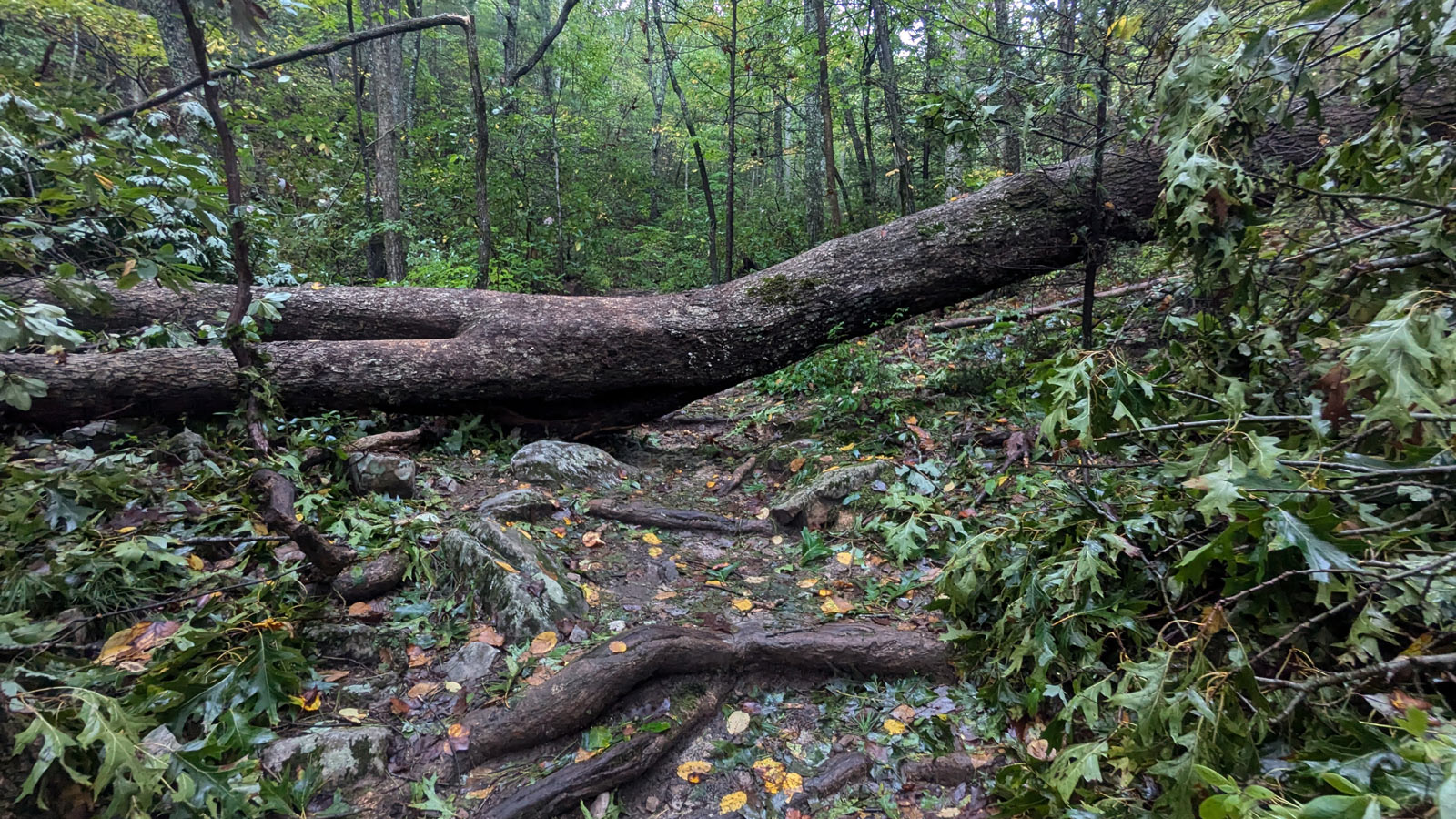
ATC Ridgerunner Suzanne Neal took this photo from the Dragon’s Tooth area of the Appalachian Trail the Saturday after Hurricane Helene. This photo shows a large and complex blowdown across the Trail, which made it difficult for hikers to pass. This very busy section of A.T. had many blowdowns, all within a quarter mile of each other.
Anne Sentz, Regional Manager of the Smokies and North Carolina
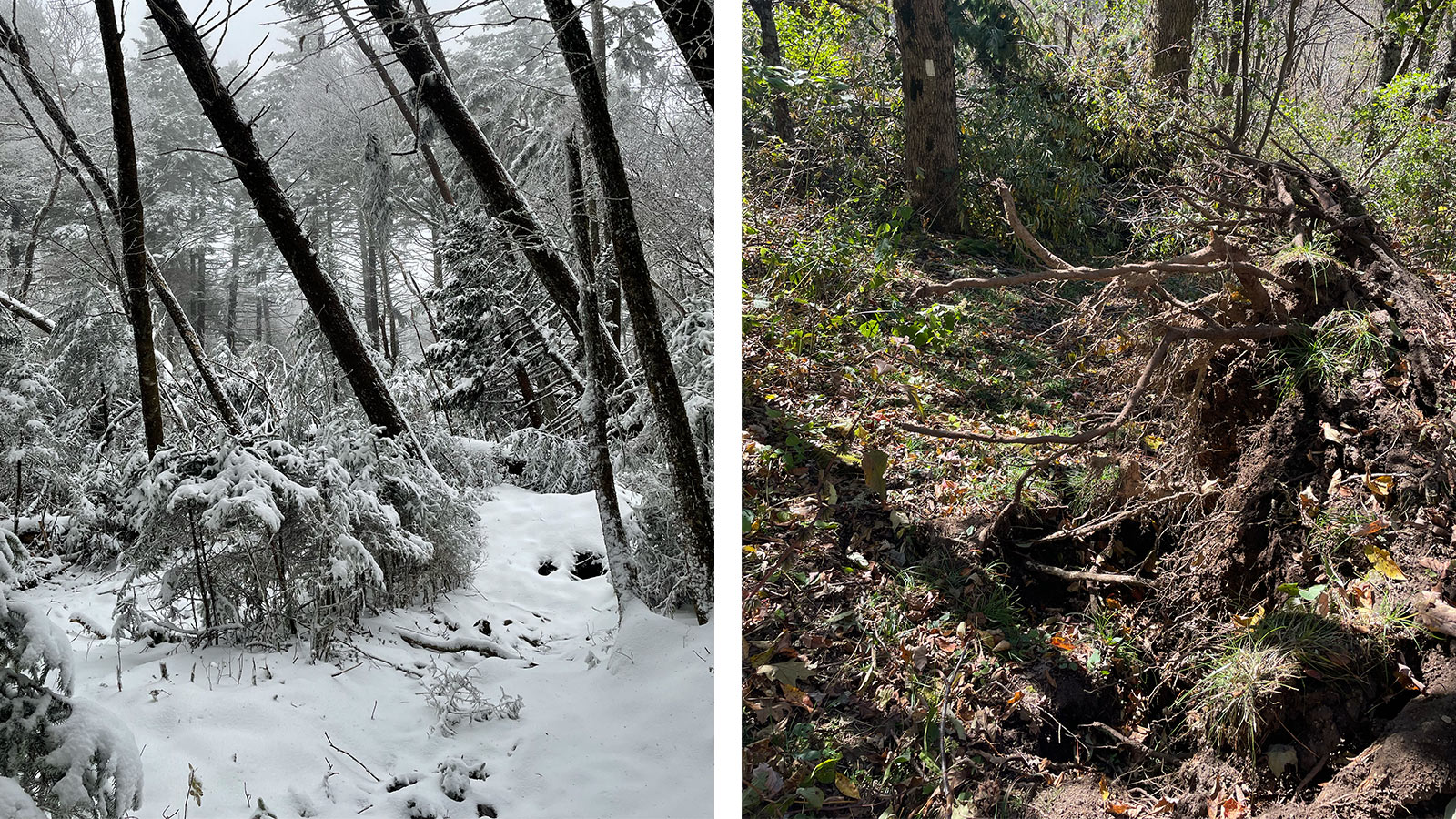
The first photo shows damaged Spruce stands on top of Unaka Mountain on the Cherokee National Forest in Tennessee. These damaged trees show the power of devastating winds that swept through the region during Helene. This photo was taken by ATC staff participating in Trail assessments in conjunction with Cherokee National Forest on 10/16.
The second photo shows how, in some places along the A.T., uprooted trees have taken part of the treadway with them as they have fallen. This root ball has damaged a section of Trail near Beauty Spot, creating a large hole and unstable footing. This type of tread damage is common on the Cherokee National Forest in Tennessee following Helene. Photo taken by ATC staff participating in Trail assessments in conjunction with Cherokee National Forest on 10/10.
Virginia Mooney, Natural Resource Technician
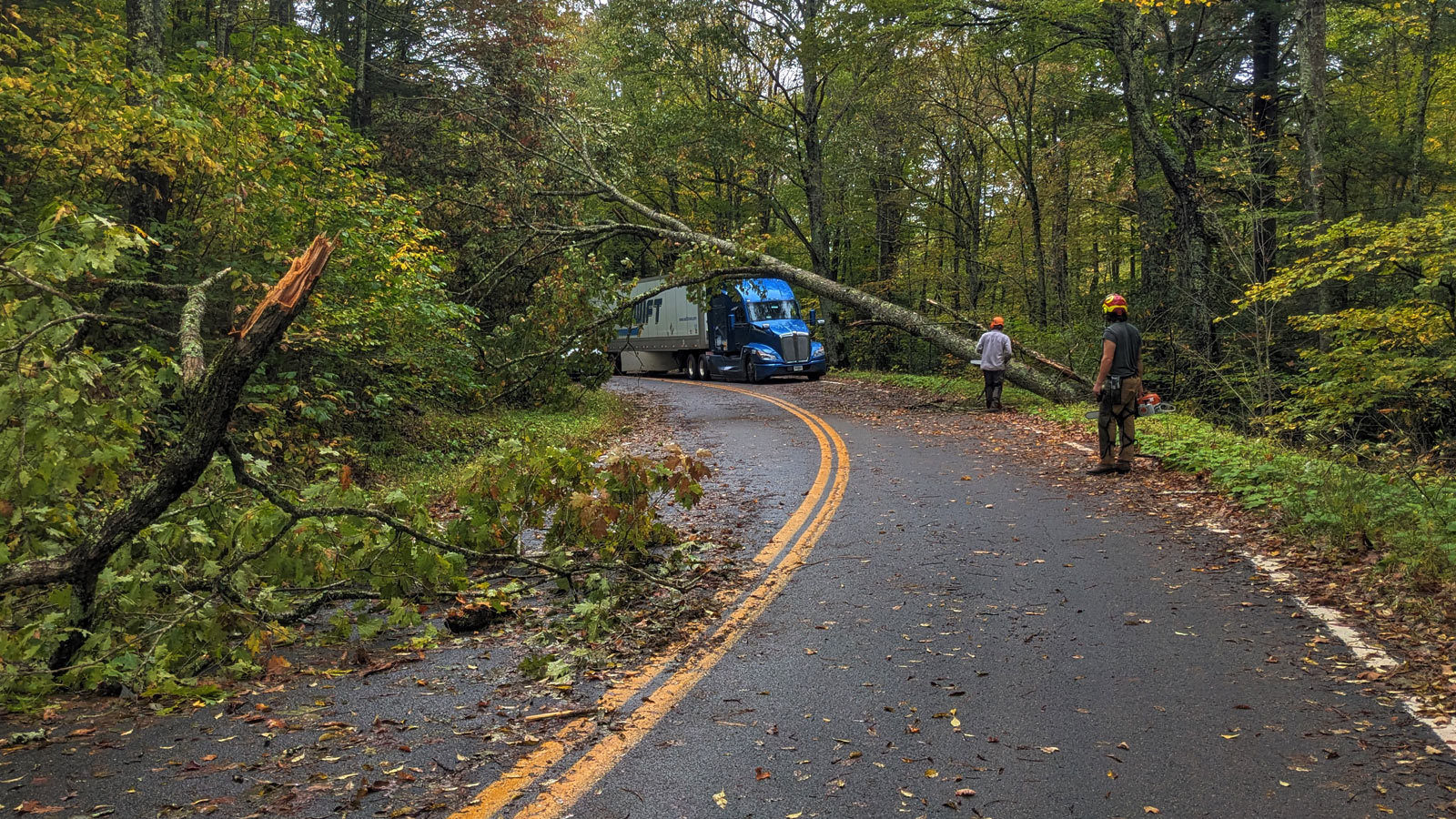
The first photo of the tree across the highway is of highway 603 in the Mt. Rogers National Recreation Area. ATC staff assisted a Forest Service employee in removing a tree from across highway 603 that was blocking the way for us and the truck. We were able to clear the road safely.
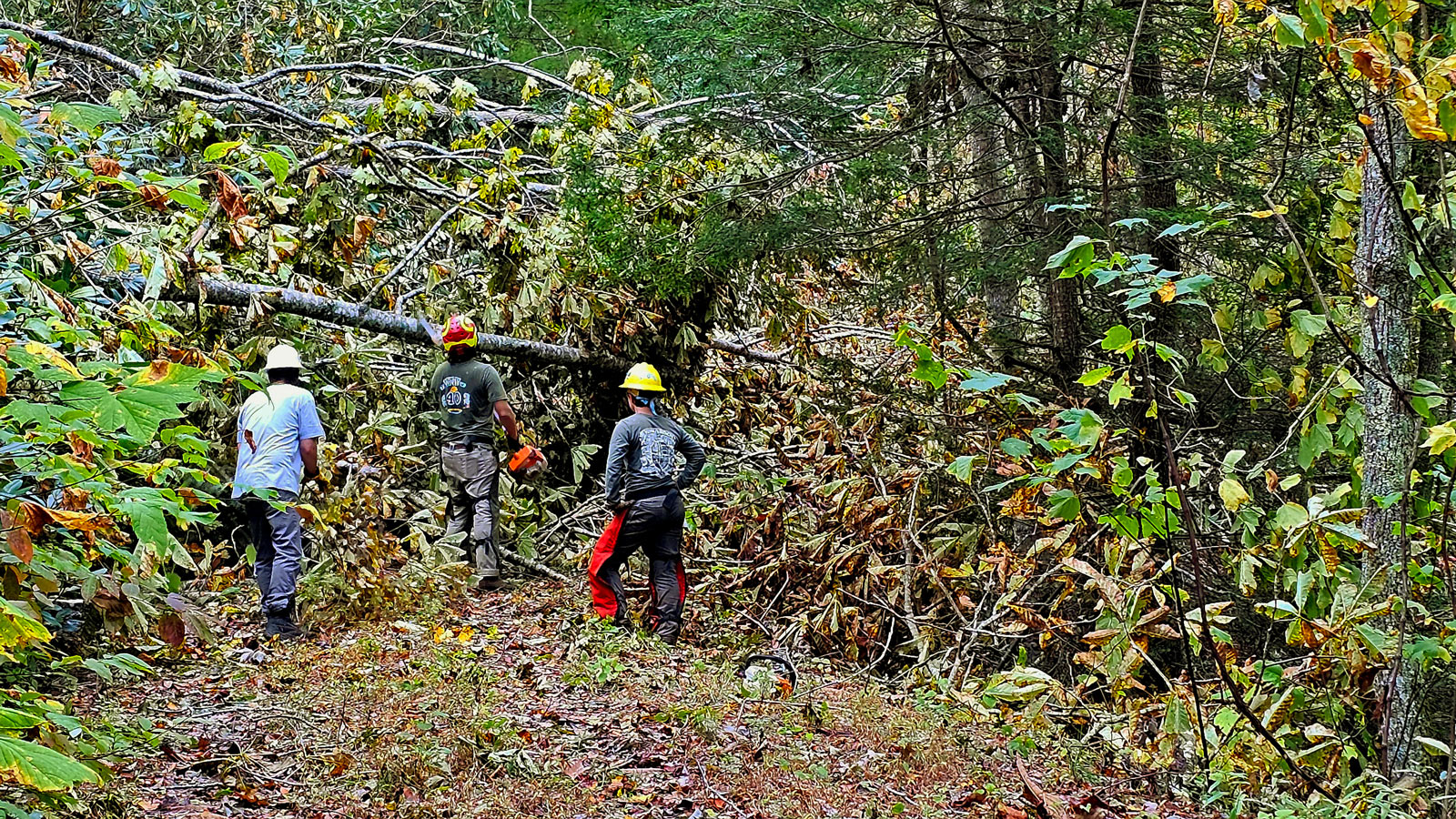
The second photo shows ATC employees using a pole saw to clear a blowdown that had fallen across the access road to Saunders shelter in Mt. Rogers.
Conner McBane, Natural Resource Manager

The ATC in coordination with the Mount Rogers National Recreation Area (MRNRA-USFS), spent a full day clearing storm damage along the emergency access route to Trimpi Shelter in Smyth County, Virginia. Upon arrival to the shelter, the ATC sawyer crew noticed a northern red oak tree had struck the shelter and chimney. The tree was safely removed by ATC staff with no obvious roof or chimney impacts, but the shelter will need to be inspected by the U.S. Forest Service to better understand the potential structural impacts of the tree strike.
The ATC is grateful for the monumental efforts of the MRNRA to reopen Forest Service roads and lands to support emergency response, local communities, the local A.T. clubs, and the Appalachian Trail. As of October 22, the Mount Rogers Appalachian Trail Club and the Piedmont Appalachian Trail Hikers are working hard to clear the A.T. from Elk Garden to VA 42. We thank the MRNRA, MRATC, and PATH for their tireless efforts through this natural disaster.
Drew Hines, Damascus Trail Center Representative

The first photo is the memorial bricks that were displaced from the sidewalk during the flood. Someone in Damascus collected all of the ones that weren’t washed away.
The second photo is the mud left in the Damascus Trail Center garage after the flood waters receded. Following dedicated clean-up efforts, the Damascus Trail Center re-opened to visitors on October 15.
Matt Drury, Resource Management Coordinator

These two images were captured during clean-up efforts in Hot Springs, North Carolina, which was devastated by Helene. ATC staff manage the Appalachian Trail and its landscape, but each staff member is also a member of their community. Many ATC staff members, like Matt Drury, participated in aid efforts in the southern region.
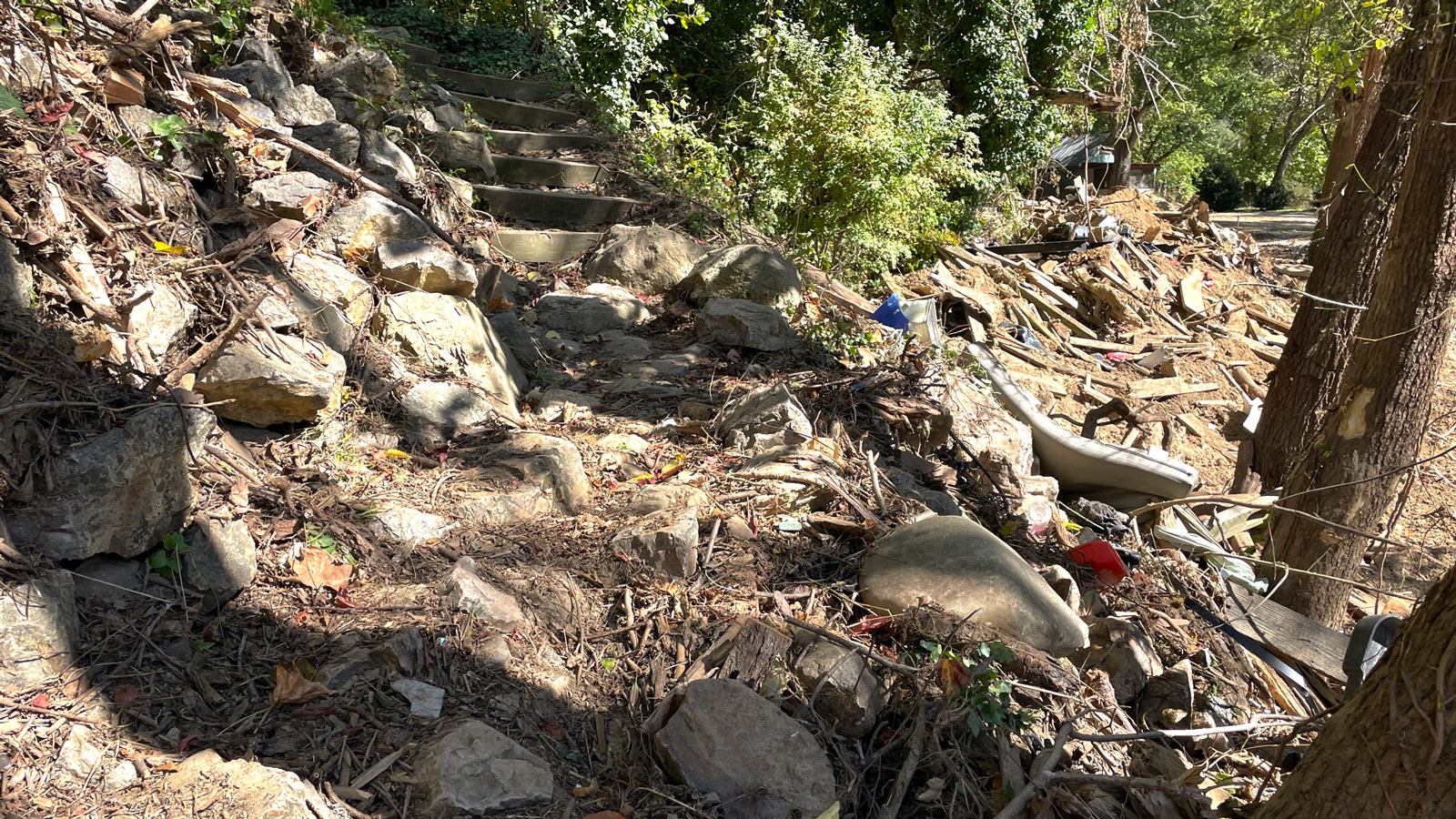
In an environmental disaster like Helene, there are landscape and Trail impacts, but the humanitarian crisis is the first priority. In Hot Springs, which has an economy largely built on hospitality and outdoor recreation, homes and businesses were destroyed and lives and livelihoods lost.
Hurricane Helene’s impact on the Appalachian Trail and its surrounding communities has been severe, but the resilience of both the land and the people remains strong. As cleanup and restoration continue, the Appalachian Trail Conservancy is dedicated to ensuring that the Trail and its communities recover fully. You can help support these efforts by donating to the Appalachian Trail Resiliency Fund, which provides critical resources for disaster recovery and trail preservation. Your support will help restore the Trail and assist the communities that rely on it.
Discover More
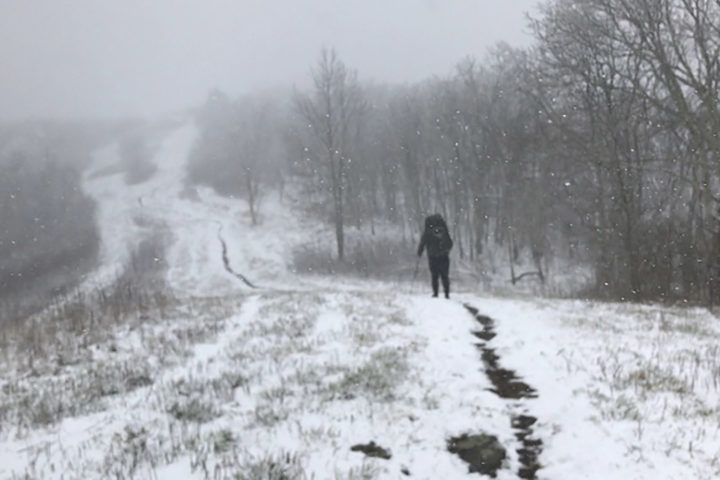
Plan and Prepare
Trail Updates
Know before you go — be aware of the latest Appalachian Trail conditions, weather advisories, and reroutes/closures.

Stay Informed
Latest News
Read the latest news and updates about the Appalachian Trail and our work to protect it.

Official Blog
Climate Resiliency and the A.T.
Protecting and expanding climate-resilient forests along the Appalachian Trail is vital to ensuring their long-term survival.
